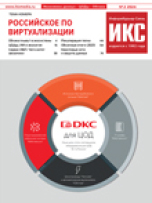| Рубрикатор |  |
 |
| Все новости |  |
World News |  |
 |
In-building solutions - Warning signals
| 16 ноября 2009 |
In-building solutions are often proposed as a key answer to offloading traffic from the macro cellular network - yet will the adoption of such technologies leave operators with a headache of a different kind?
Stats from Airvana purport to show that a typical smartphone is eight times more demanding of the signalling network than a laptop or notebook dongle. The reason is that "always on" applications like push email, location and IM are a lot heavier in terms of the network signalling resources they consume than a P2P session or video stream, even if the actual data load is lighter.
This is because they continually ping the network with or for updates, which mobile signaling networks are not best equipped to deal with. What mobile networks are good at is setting up sessions, like voice conversations, and then taking them down when they are finished. This is why video streams and file sharing are not so intensive on the signalling.
Airvana's theory goes like this. Although a smartphone generates only 4% (1/25th) of the traffic of a connected laptop, it takes up 33% (1/3rd) of the signalling support needed by a laptop. If you divide 25 by 3, you get 8, meaning a smartphone is eight times less efficient than a connected laptop in terms of its consumption of network signaling resources. So the question is, does this matter? After all, all phones, smartphone or otherwise, poll the network all the time, because they are mobile, and always on.
But David Nowicki, vice president, Marketing and Product Management, said that it is the traffic type generated by smartphones that means that operators will be facing an additional load as more and more consumers adopt the devices.
Smartphones also simply generate more data than featurephones, and run more applications, meaning that the information required from the network also increases.
Figures we have from network optimisation specialist Byte Mobile would back this up. They show that the percentage of mobile data traffic from laptops on networks of operators with the iPhone are half those of those without the iPhone.
So is this a pressing problem? Nowicki said that it is hard to generalise, as different operators experience different usage, but pointed out that smartphone sales are set to boom. Global annual shipments of smartphone handsets are projected to increase from nearly 200 million in 2009 to 450 million in 2013, according to market research firm iSuppli Corp. In the US, AT&T recently reported that smartphone penetration in their postpaid subscriber base has doubled to 36% and Verizon reported that 40% of their handsets sold in Q2 2009 were smartphones. Similarly in Western Europe, industry analyst IDC recently reported 25percent growth in sales of smartphones in Q2 2009 compared to Q2 2008. In other words, if this isn't a problem now, then it soon might be.
So what can be done?
Well, Nowicki said that one answer is to look to offload smartphone traffic off the network using femtocells. The advantage of this is that signalling resources can then be localised and targeted to the actual source of the traffic.
Sam Samuels, Executive Director of Bell Labs Ireland takes a slightly diferent angle.
He says, "Femtocells are designed to offload data traffic from a wireless network onto a wireline network. In this way, they hold the potential to offload some of the wireless data that is increasing due to growing smart phone use. However, cellular wireless devices still need to send signals to access the cellular wireless systems, this aspect of the signalling can never be off-loaded onto wireline networks entirely. There is still a need for wireless networks to be managed carefully and this cannot be solved entirely by femtocells, though femtocells can help to ease the data management challenges that wireless networks are facing."
It should be noted that Airvana stands to benefit greatly from widespread femtocell deployment. Does Nowicki think that deploying femtocells, with all the marketing, customer care and support overheads that come with something like that, is the most efficient way of solving increased load on an operator's signalling resources?
"A femtocell solution pinpoints things. It introduces the spatial domain to signalling, which is something that needs to be brought in, and makes the targeting of resources more precise. And if an operator deploys femtocells for his own purposes, then he does not need to enter the same level of marketing and consumer engagement than if his femtocell launch is all about the services," Nowicki said.
John Spindler, VP of product management said, "The challenge facing mobile operators is that there is only so much capacity available in a given amount of wireless spectrum, and spectrum is a limited resource for which they pay dearly. As smartphones and mobile broadband applications are already increasing network capacity demands tenfold in some areas, mobile operators must find ways to provide more capacity with the same spectrum. The only way to do this is to reduce the size of each mobile cell (which spreads a cell's capacity among fewer users and thus increases the capacity available to any given user), and to optimize frequency re-use.
"What we are seeing today is that mobile operators have begun implementing what we call "micro cellular" architecture, essentially deploying a larger number of smaller and less costly base stations to create smaller cells.
"We believe that micro-cellular architecture will become the predominant way of ensuring sufficient network capacity as mobile broadband usage increases."
But, it seems, it still leaves the operators with the headache of the signalling.
No Shortage of Solutions
As these in-building issues have become more prominent, the marketplace has responded with an ever-growing array of solutions. Here's a quick review from ADC's John Spindler.
DAS - Distributed Antenna Systems (DAS) have been used for years to extend mobile coverage inside buildings as well as in outdoor areas like stadiums, car parks, campuses, and other structures. DAS minimises the number of backhaul connections and the expense of BTS equipment by relying on centralised base stations and then distributing their signals with more cost-effective remote antennas.
Remote radio heads - Remote radio heads extend a base station's coverage by broadcasting its signal in a new area. In effect, these operate as an outdoor DAS, which is far more cost-effective than adding more base stations. Traffic from radio heads can be backhauled via terrestrial networks or microwave links.
Micro base stations - When remote or isolated areas require network coverage, it may not be cost-effective to extend a macro network out from its nearest edge. Islands, cruise ships, military bases, and other areas require dedicated networks, and micro base stations fill this need. Backhaul options include microwave and satellite links.
Picocells and femtocells - Recently, vendors have begun offering smaller base stations that can provide cellular service for smaller facilities. The advantage to these is that they provide coverage and capacity: rather than forcing carriers to use part of their macro network's capacity for users inside a home or office, they can provide dedicated capacity within the facility. Picocells can even be grouped to deliver more capacity, which is then distributed with a DAS. The advantage to these options is that traffic can be backhauled over existing cable, DSL, or other IP connections.
Источник: Mobile Europe

















Оставить свой комментарий:
Комментарии по материалу
Данный материал еще не комментировался.